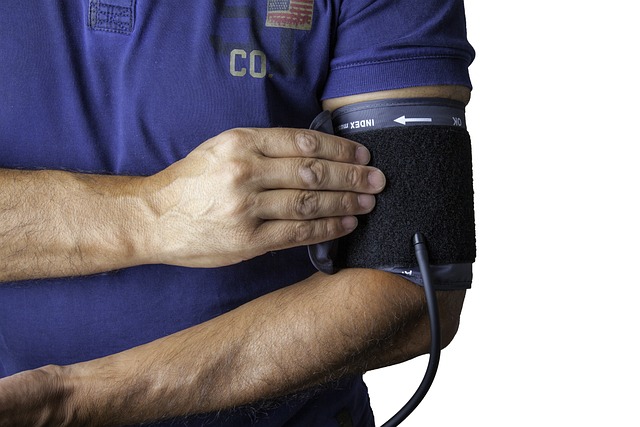Early Indicators and Symptoms of Heart Attack in the United States 2025
Many heart attacks are preceded by subtle warning signs days or weeks before onset. Recognizing these early symptoms can be lifesaving by prompting timely medical care. This article summarizes early indicators of heart attacks to help readers in 2025 better detect and respond to cardiac problems.

Grasping the Significance of Early Heart Attack Symptoms
Heart attacks, or myocardial infarctions, happen when blood flow to the heart muscle is obstructed, causing tissue damage and potentially fatal consequences if left untreated. While some heart attacks strike suddenly with intense symptoms, many start more slowly with mild warning signs. Early recognition of these signals can greatly enhance survival chances and limit heart injury by allowing rapid medical response.
Typical Early Warning Signs to Be Aware Of
Unexplained Fatigue That Is Unusual
A commonly ignored symptom is sudden or unusual fatigue. Many people in the United States report feeling abnormally tired after routine activities, sometimes days or weeks prior to their heart attack. This ongoing tiredness suggests the heart might not be getting enough oxygen-rich blood, indicating underlying cardiovascular strain.
Mild Chest Tightness or Pressure
Chest discomfort remains the key symptom of heart problems. Still, it doesn’t always appear as sharp or severe pain. Numerous individuals experience mild, persistent pressure or squeezing sensations—often likened to “an elephant sitting on the chest.” This feeling can last several minutes and should never be overlooked, especially if it happens repeatedly.
Shortness of Breath During Normal Activities
Difficulty breathing or shortness of breath during everyday tasks, such as walking or climbing stairs, is a crucial warning. This occurs due to reduced blood flow and oxygen delivery to the heart and lungs. Breathing difficulties may appear with or without any chest discomfort.
Pain Spreading to the Arms, Neck, or Jaw
Discomfort spreading beyond the chest—particularly to the left arm, neck, or jaw—might signal an impending heart attack. Recognizing this radiating pain is important, as it often precedes more severe cardiac episodes.
Sleep Problems and Heightened Anxiety
Some people encounter sleep disturbances, restlessness, or wakefulness shortly before a heart attack. An unexplained feeling of anxiety or impending doom can also serve as early symptoms, especially among those who already have risk factors for heart disease.
Cold Sweats and Nausea as More Urgent Indicators
The sudden emergence of cold sweats along with nausea or vomiting accompanying chest discomfort may point to progressing heart muscle damage. These signs highlight the necessity for immediate emergency treatment.
Swelling in Legs and Feet
Edema or swelling in the feet, ankles, or legs—especially if combined with rapid weight gain—indicates that the heart’s pumping ability might be failing. This can signal worsening heart failure and raises the likelihood of a heart attack.
Differences in Heart Attack Symptoms Between Genders
Understanding the variation in symptoms between men and women is essential. Women in the United States often experience less typical heart attack signs than men. Instead of classic chest pain, women may report:
- Indigestion-like discomfort or nausea
- Pain in the back or jaw without chest pain
- Uncommon fatigue or increased anxiety
Because women’s symptoms tend to be subtler, awareness and prompt medical evaluation are critical, as mortality rates from heart attacks are higher among women.
Important Risk Factors to Monitor
Certain health conditions necessitate close attention to early warning signs, including:
- High blood pressure
- Elevated cholesterol
- Diabetes
- Obesity
- Smoking
- Sedentary habits
- Family history of heart disease
Those with one or more of these risk factors should keep up regular health screenings and remain alert to symptoms.
When Emergency Medical Assistance Is Necessary
Immediate care should be sought if you or someone else experiences:
- Chest pain or discomfort lasting more than five minutes
- Intense pain radiating to the arms or jaw
- Difficulty breathing even during mild activity
- Fainting or near-fainting
- Symptoms that do not subside with rest
In the United States, calling 911 rather than driving yourself is advised because emergency personnel can start treatment en route and notify the hospital ahead. Swift action improves outcomes and can save lives.
Conclusion
Being aware of and recognizing the early signs of a heart attack empowers individuals to act promptly, potentially preventing severe heart damage or death. From unusual fatigue and mild chest pressure to gender-specific symptoms and urgent signs like cold sweats and nausea, knowledge can be lifesaving. In 2025, staying informed remains a key defense against the increasing number of heart attacks in the United States.
Sources
- Early Warning Signs of a Heart Attack - Cleveland Clinic
- Warning Signs and Symptoms of Heart Disease - MedlinePlus
Disclaimer: This article provides informational content only and is not a substitute for professional medical advice. If you are experiencing symptoms of a heart attack, please consult a healthcare professional immediately or call emergency services.




